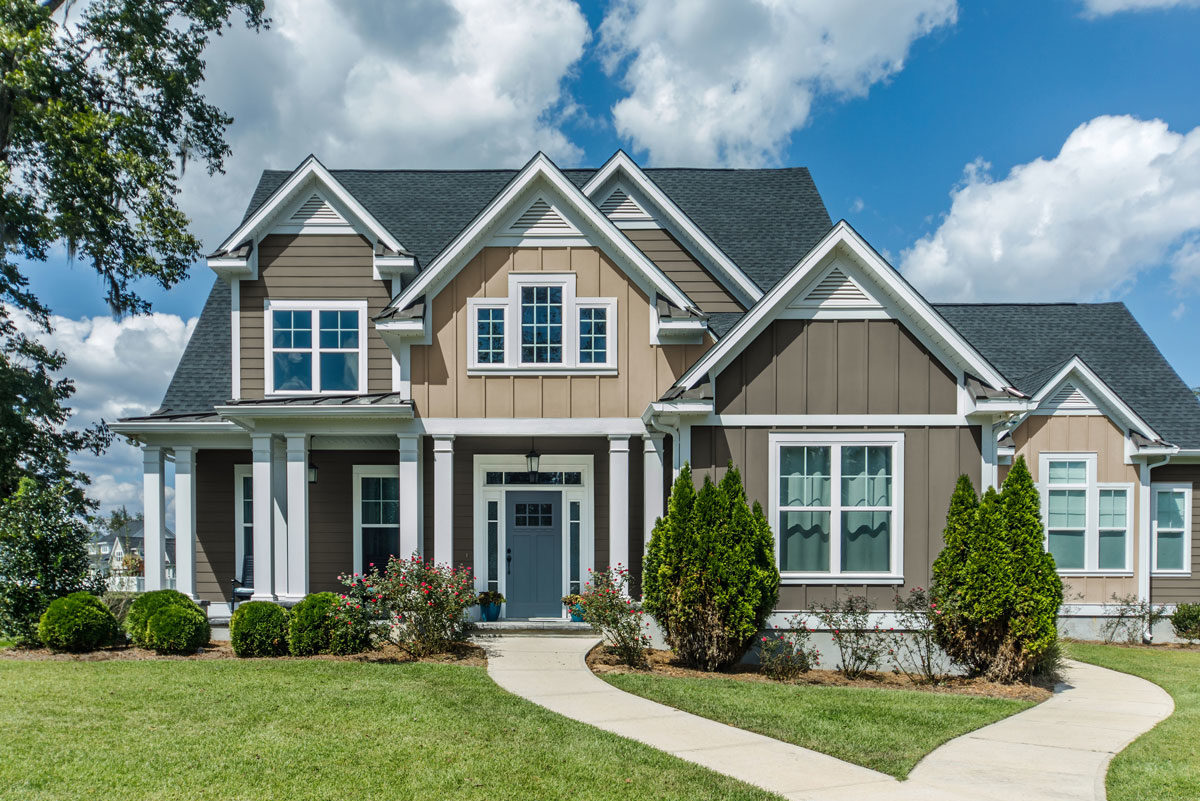Story at a glance:
- Creating an energy-efficient home is easier than ever—and more in demand.
- Solutions like bamboo flooring and new air filters can make your space more energy-efficient and cost effective.
- Adding radiant heating or a green space are more options for residential projects.
Energy-efficient home ideas are top of mind for many architects and homeowners alike, as green homes are on the rise and owners search for ways to make their carbon footprint smaller. According to a study from the Net Zero Coalition, 59% of new single-family homes are becoming zero energy. From radiant floors to green spaces, making your home greener is easier than ever.
Here are nine energy efficient home ideas for your residential project.
1. Energy-Efficient Windows
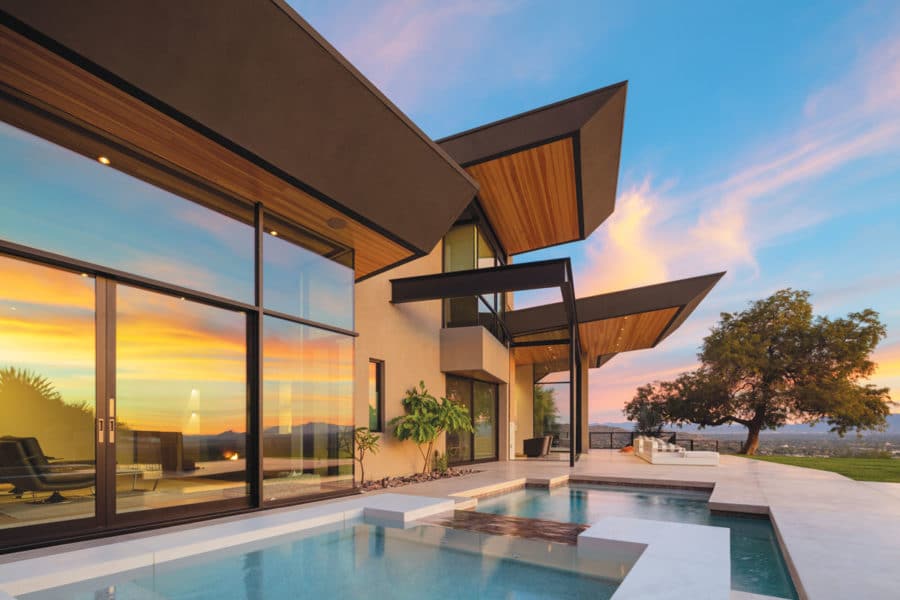
Photo courtesy of Western Window Systems
When architects incorporate larger windows into residential projects, they not only create an open concept but also bring in more natural light. Natural light cuts down on heating and energy costs and also has positive biophilic effects.
Western Window Systems offers large windows and sliding doors that make it easy and beautiful to bring in as much natural light as possible. For almost six decades the Phoenix-based company has been bridging the gap between imagination and reality with its innovative door systems and windows. The company’s products give architects the tools to design homes with abundant natural light, all while keeping the homes as energy-efficient as possible.
In recent years, Western Window Systems has responded to the demand of designers of contemporary architecture for increasingly large sheets of glass, pushing the limits of width and height with each new product line. Today, a multi-slide door system—a wall of glass that slides open to merge the inside of the home with its environs—can be upward of 14 feet tall. Windows can stretch to 10 feet. “Other manufacturers just don’t do that,” Ty Cranford, architectural director for Western Window Systems, said in a previous gb&d article.
2. Radiant Heat

Photo courtesy of Uponor
Hydronic radiant heating is energy-efficient and also improves indoor air quality, according to the experts.
“Because hydronic radiant heating systems use pumps to move water instead of fans or blowers to push air, the system does not circulate viruses, allergens, or odors throughout the indoor space,” wrote Kim Bliss, content development manager at Uponor, in a previous article for gb&d.
Radiant floor heating is also quiet, unlike many other forms of home heating and cooling systems, and there is less maintenance work needed, Bliss said.
In a hydronic radiant heating system, warm water flows through flexible plastic tubing embedded in a concrete slab or placed on top or underneath the subfloor. The warmth from the flowing water through the tubing radiates up from the floor to bring comfort to people in a space.
3. Bamboo Flooring

Strand bamboo flooring. Photo courtesy of dasso USA
Incorporating bamboo is another way to make your home greener. You can add bamboo in numerous forms—whether it’s a modern light fixture like one created by David Trubridge or even as flooring.
Until 2005 traditional bamboo flooring was the only style of bamboo flooring available since the industry started in 1995, but that changed when strand bamboo hit the market, according to a previous article in gb&d.
Unlike traditional bamboo flooring, strand bamboo combines the durability and dimensional stability of tropical hardwoods with the green credentials of traditional bamboo flooring products. Strand bamboo’s durability, stability, sustainability, and inherent aesthetics make it a top choice for flooring.
4. Thermally Modified Timber
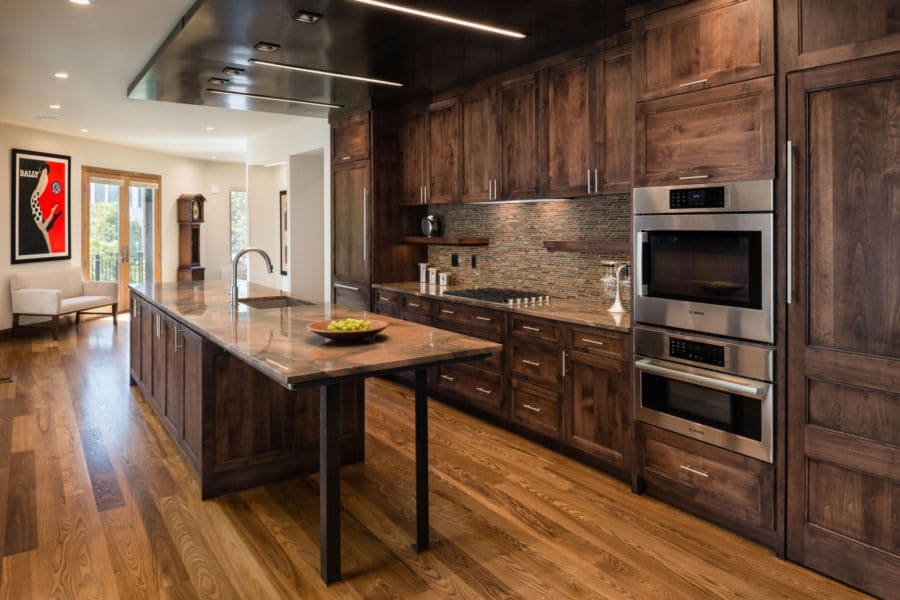
Photo courtesy of Arbor Wood
Thermally modified timber (TMT) is a natural wood product that has undergone a chemical change using heat and steam to improve outdoor stability, Jon Heyesen wrote in a past submission to gb&d.
Heyesen said thermally modified wood has proven to be a great option in environments that are typically unforgiving to wood—including exterior siding and decking, interior flooring, or anywhere a low-maintenance natural wood product is desired.
Less fiber saturation means that a natural wood product is now more dimensionally stable and less susceptible to humidity and temperature-induced expansion and contraction, which is ideal for climates with wide fluctuations, like the Pacific Northwest, Midwest, and East Coast.
Thermally modified wood also provides for a number of LEED contributing credits, including those for rapidly renewable material and low-emitting materials. With current design and building trends focusing again on natural and eco-conscious materials, thermally modified timber has emerged as a compelling material for many applications.
5. Biomass Furnaces
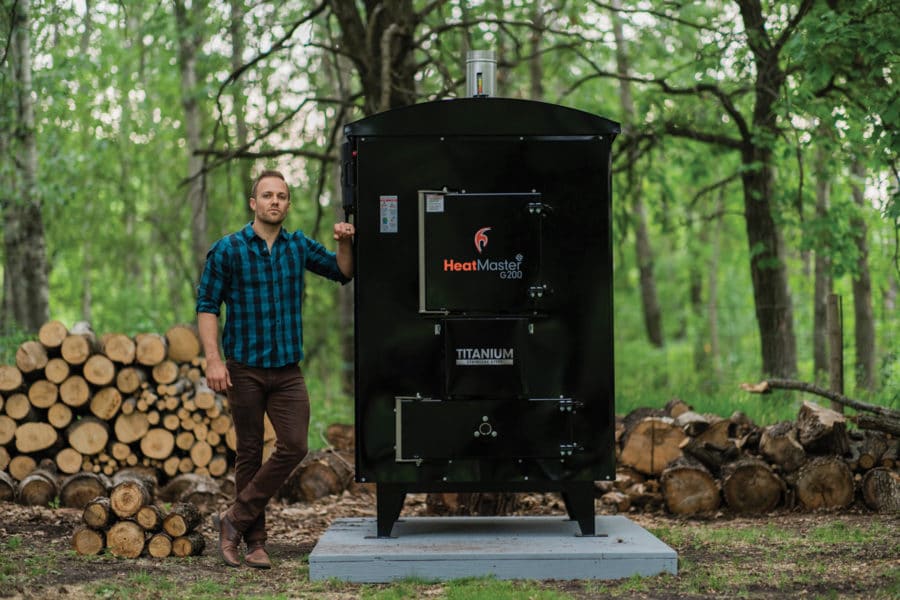
Photo courtesy of HeatMasterSS
Biomass furnaces are indoor/outdoor furnaces that create heat at little cost to the environment. Jake Friesen, founder and CEO of HeatMasterss, has developed technology to incorporate different fuel types at a net zero emission.
From burning egg shells to wood chips, the biomass furnace utilizes a variety of different materials at a lower cost than the electric company. In a previous gb&d article we learned burning wood chips cost about one cent per kilowatt of energy, compared to anywhere from 10 to 20 cents per kilowatt with natural gas or other fossil fuels.
By optimizing the fuel burn rate and fine-tuning the level of combustion within the furnace, HeatMasterss’ B Series burns as clean and efficiently as possible. “We’re able to achieve a lot more energy out of the same amount of fuel, with a fraction of the emissions,” Blair Groening, head engineer at HeatMasterss, told gb&d.
6. Metal Roofing
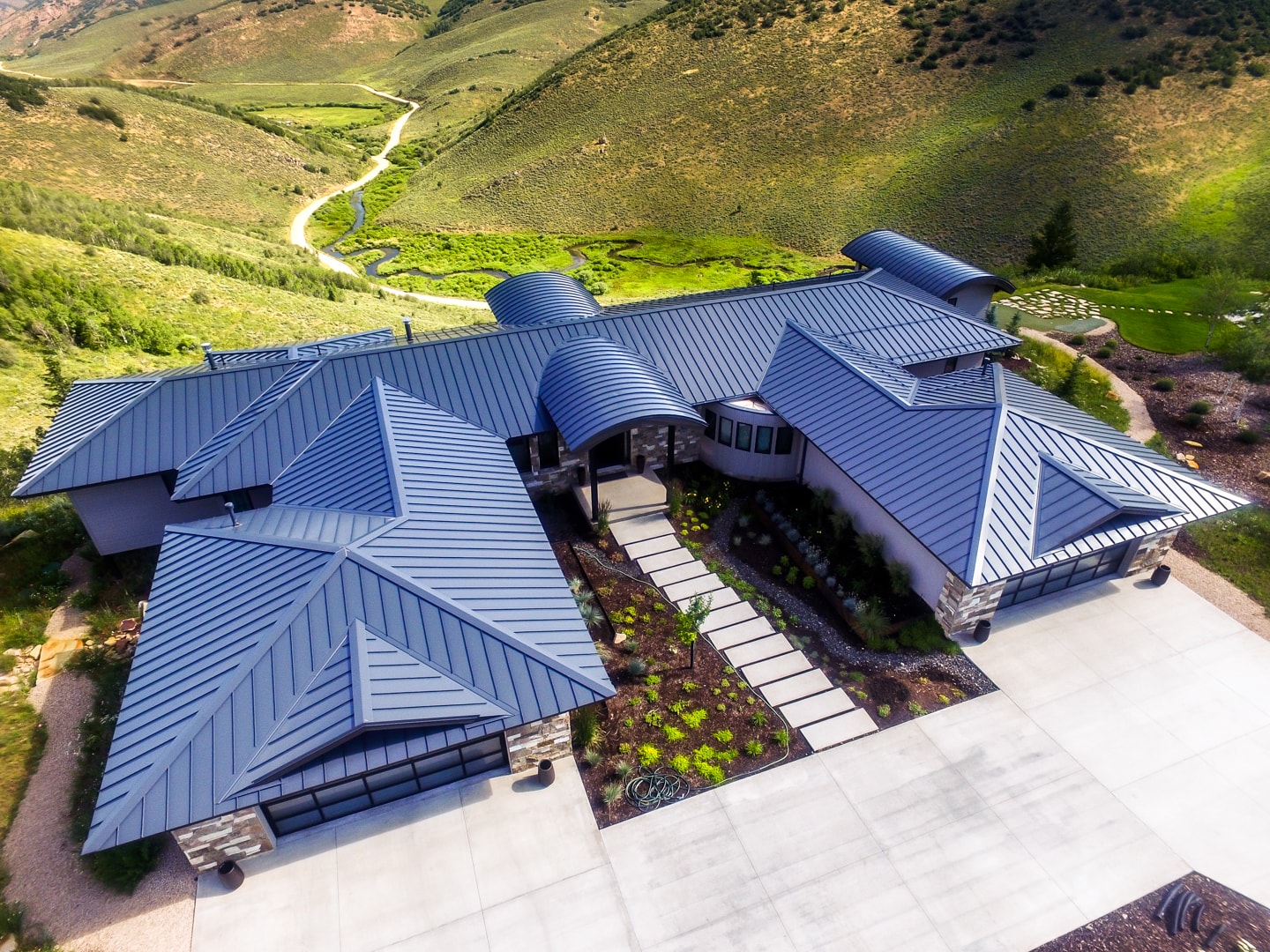
Photo courtesy of Drexel Metals
Metal roofs are also on the rise, as its distinct form is not only another in a long list of energy efficient home ideas, but it’s also durable and long-lasting.
Incorporating a metal roof can save you up to 40% alone with air-conditioning costs, according to the experts at Drexel Metals. All through the seasons, metal reduces energy loss in the colder months and reduces trapped heat through summer.
Compared to other materials, metal roofing is shown to last through higher wind speeds and extreme weather at a better performance.
7. Pleated Air Filters
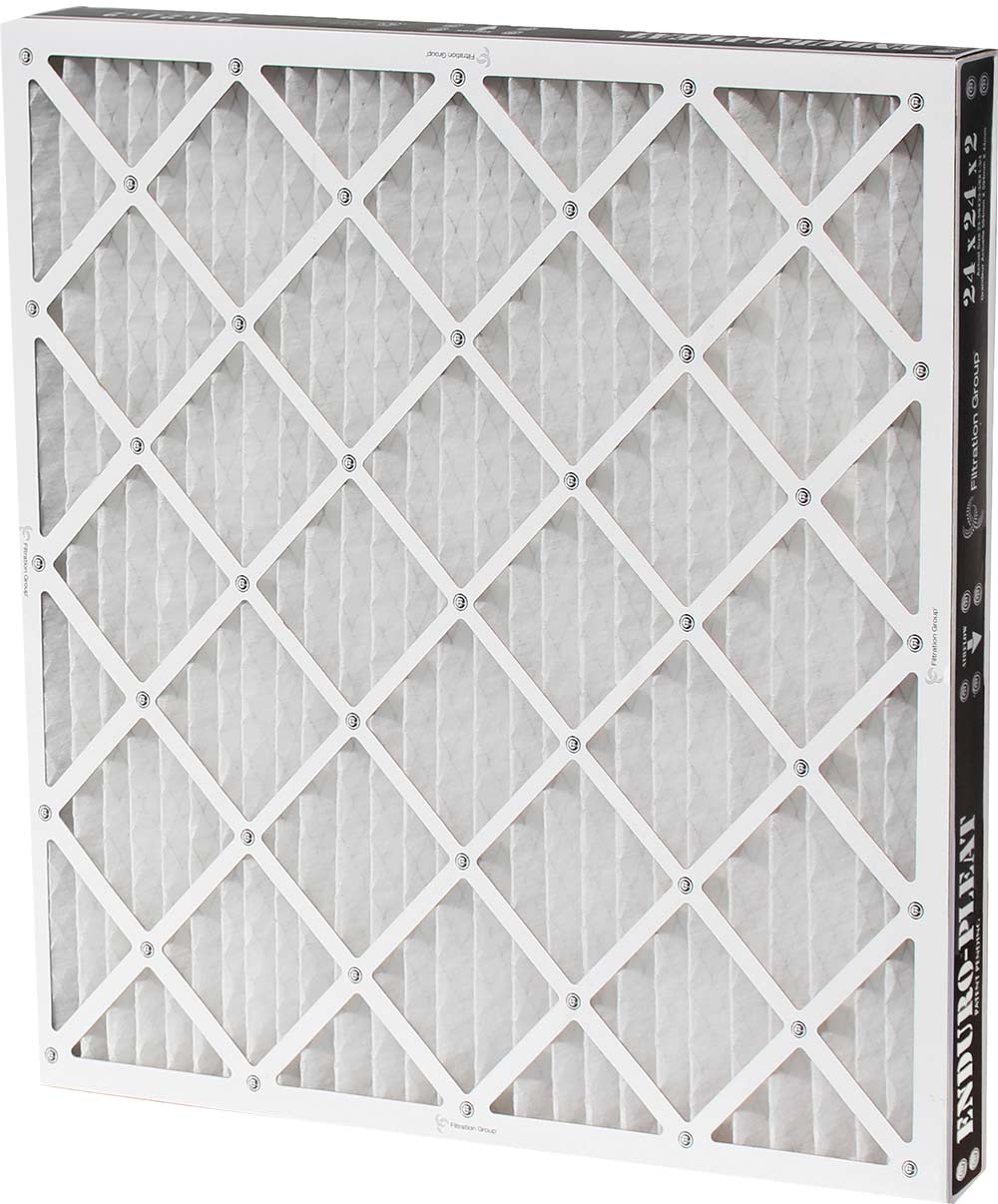
Photo courtesy of Filtration Group
Indoor air quality should be of top concern for homeowners when they’re in the process of building a home. Filtration Group manufactures an extensive line of pleated air filters, which use folds in their media to pack more surface area into a single frame, allowing for a higher dust holding capacity (DHC) that results in better filtration and a longer product lifespan.
Compared to Filtration Group’s MERV 8 NOVAPLEAT, the new NOVAPLEAT X promises to capture 20% more particles in the ASHRAE spectrum. In other words, the NOVAPLEAT X not only protects HVAC equipment more effectively; it can make downstream efficiency filters last longer, and do so without losses in energy efficiency while improving Indoor Air Quality (IAQ). The NOVAPLEAT X is also designed for automation, meaning it’s machine-made using a streamlined process.
8. Green Roofs
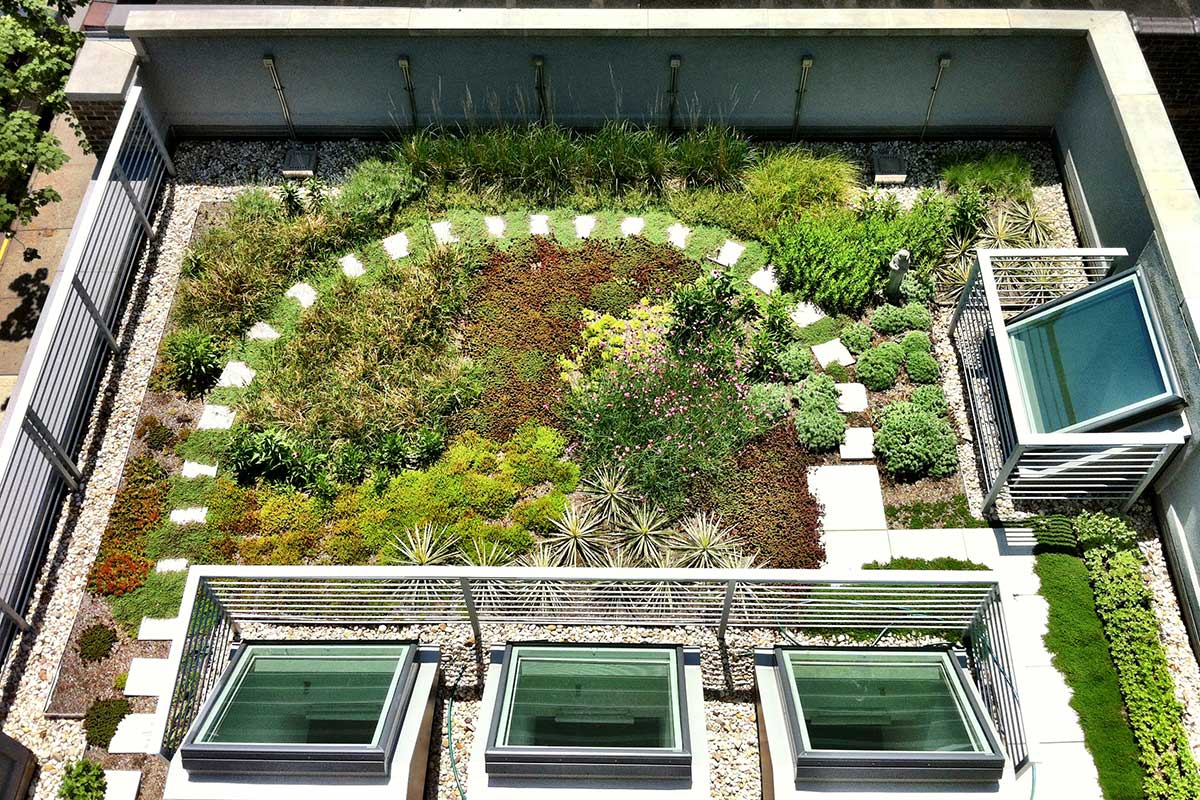
Photo courtesy of Greensulate LLC
Adding a green roof is another energy efficient home idea, and it’s also a beautiful way to go green if you have the right space. Greensulate has projects all over the US and points to benefits like increased property value as another reason to consider a green roof.
Stormwater capture is another reason, and it adds to your home’s efficiency. Whether the roof is extensive—covering a broad area with mats of sedum that require only about three inches of growth medium—or intensive (deeper soil, bigger plants), a green roof captures 70 to 90% of precipitation. This benefits urban environments where stormwater causes flooding and, where there are combined wastewater-stormwater sewage systems, bacterial outflows to rivers, lakes, and sometimes into houses in low-lying areas.
9. Pre-Finished Siding
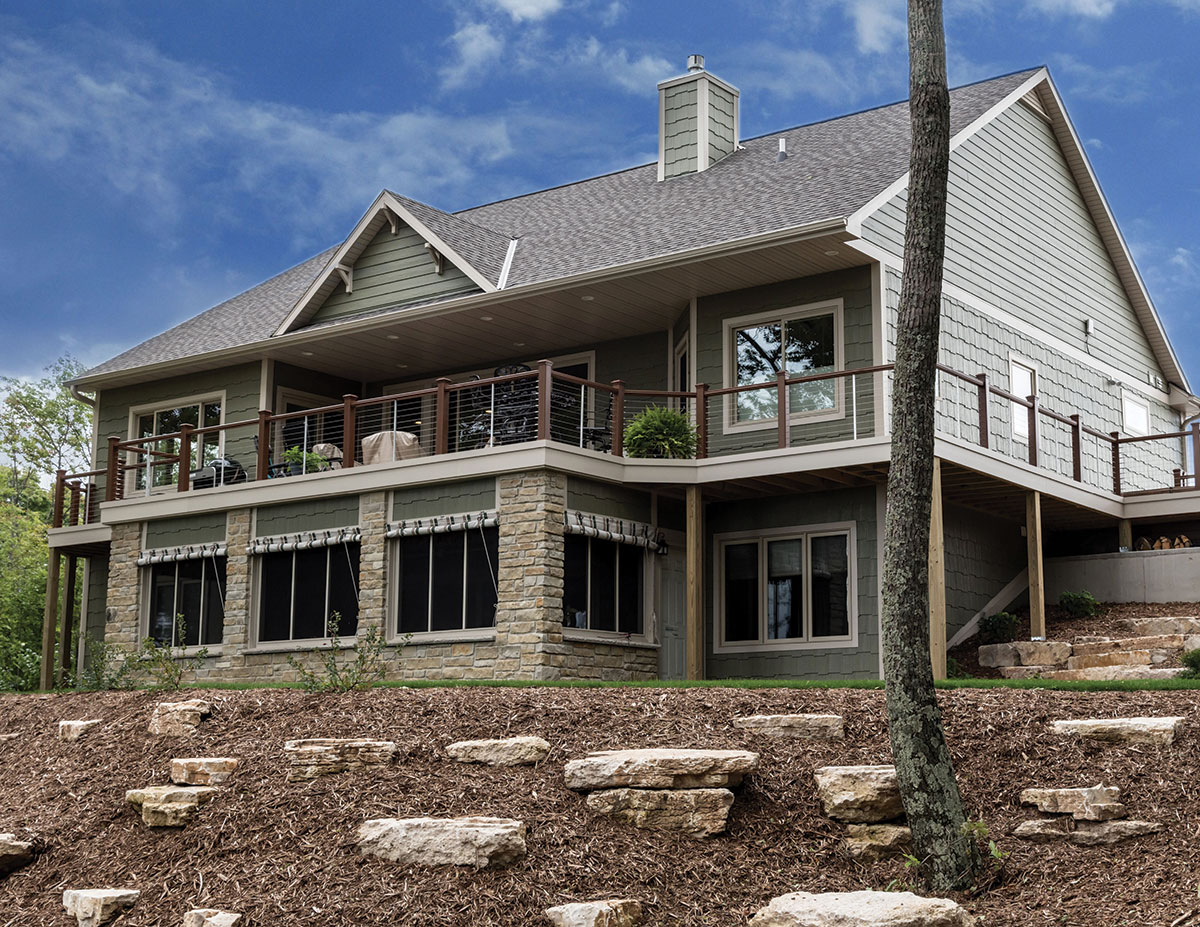
This property has Diamond Kote RigidStack siding and Staggered RigidShakes prefinished in olive with sand nail fin trim. Photo courtesy of Diamond Kote Building Products
Diamond Kote’s pre-finishing siding solutions are another energy efficient home idea.
Because Diamond Kote uses such a durable substrate and only the best ingredients, siding requires only one coat. That’s obviously a plus from a manufacturing standpoint, but it’s also better for the environment, because while the product is completely waterborne, less is always better. “It was developed that way from the get-go to be HAPS-free for the benefit of our employees,” said Andy Strey in a previous gb&d article. “And we have very little wasted paint in our process. Even the minimal amount of excess paint that’s invariably a byproduct of the manufacturing process is disposable. An in-house press process extracts water and leaves behind only pigment that’s easily dried before it’s properly disposed of.
Using state-of-the-art equipment, Diamond Kote’s robotic sprayers apply finish to the boards with minimal overspray to prevent waste. In addition to the uncompromising quality of its products, one of Diamond Kote’s biggest selling points is the efficiency of its complete system.

